First interview from Sì Gathering Day!
How does Cate Blanchett manage it all? Being a mother of four, an Oscar-winning Hollywood star, an ambassador for the UN Refugee Agency, and the face of Giorgio Armani? In a world-exclusive interview with LIFE Magazine, the 47-year-old Australian superstar reveals the mystery to our journalist. The actress and theatre director also talks about fear, self-doubt, the importance of failure in life, and the legacy of murdered Irish journalist Veronica Guerin.
When you’ve watched her acting in so many iconic film roles (Lucinda Leplastrier in Oscar and Lucinda, Meredith Logue in The Talented Mr Ripley, Elizabeth Tudor in Elizabeth, Jasmine French in Blue Jasmine, or Katharine Hepburn in The Aviator), it is almost unnerving when you are ushered into a big suite and Cate Blanchett is just sitting there . . . playing herself.
With her features framed against the sunlight that’s flooding in through the giant windows on a London summer’s afternoon, she gets up from her seat in the grand Florence Hall in Portland Place.
“I’m Barry from Dublin,” I say, to which she replies, “I’m Cate from Sydney.”
Then she gives me a hug. She is not the austere, aloof Hollywood movie star one might expect. I’ve met her before – in Dublin in 2003, when she was filming Veronica Guerin, and Cate was like that then.
So this is not an act.
Warm, normal and above all friendly, she wears her superstar status lightly. She is wearing a Giorgio Armani New Normal grey suit. At the cocktail party later that night, she wears a powder-pink Giorgio Armani sleeveless dress.
The globally feted Italian fashion titan is the reason Cate is in London today: to attend the unveiling of Armani’s Si Le Parfum and the Si Women’s Circle, which is described as “a newly created digital platform that encourages open dialogue between one another and serves as an opportunity to share life stories”. Cate has been the face and ambassador of Armani’s fragrance Si for three years.
I ask Cate what drew her to Giorgio.
“He has been a huge aesthetic influence on my sense of what was possible, visually, as a woman when I was at school,” says Ms Blanchett, who was born on May 14, 1969 in Melbourne, Australia.
“My jaw hit the floor when I first started seeing his now iconic and much absorbed influence of masculine and feminine tailoring. So I tried to emulate that in an op-shop, second-hand way, until finally, when I got my first pay cheque from my first theatre job, I went to a sale at the Sydney store – and I bought a Giorgio Armani suit.”
Asked how much her first pay cheque was made out for, the actress, who is now on quite a few million dollars per picture laughs, and says, “Oh, it was about 25 cents!
“That was my entire pay cheque for the whole season! So it wasn’t particularly sensible, but I’d always wanted one. I still have the suit. And that’s the thing – his design, his aesthetic, is timeless.
“So Giorgio has been an incredible influence on me – and I count our creative relationship as one of the great privileges of my career. We’ve worked together in the theatre, and from a philanthropic point of view, and obviously in fashion, and now being asked to be the face of his signature fragrance. It has been a fantastic, fruitful and inspiring relationship.”
When she describes Giorgio Armani’s personality as “intensely curious, intensely singular,” Cate Blanchett could be describing herself, too. “He is a perfectionist, but from an eastern perspective; he has an understanding that anything that is going to be truly beautiful must be skewed slightly.” So do you share the same artistic and intellectual curiosity? “I can but hope! He is indefatigable!” says the indefatigable Cate Blanchett.
“He is so difficult to catch. I think he is a bit like Santa Claus. Apparently, he was here last night and I missed him; I was staggering to get up to finish the school run,” she jokes, referring to her children – sons Dashiell (14), Roman (12) and Ignatius (7), and toddler daughter Edith, whom she and her husband, playwright Andrew Upton, adopted in March 2015.
“Nothing gets signed off without passing over his [Armani’s] desk. I think that’s why the house and the aesthetic of Armani has remained so absolute and influential, because his hand is really across everything.”
Have you learned from him in terms of film roles?
“I greatly admire his passion and his work ethic . . .”
Being commercial but also keeping the integrity?
“I feel like you’re leading somewhere!” Cate Blanchett laughs as the giant, male Armani PR handler in the room does anything but laugh.
I suggest that perhaps the road I was leading her down was that, in a sense, some of her roles could be considered couture.
“You mean, elite and unattainable – and no one purchases them?” she laughs.
“But there is a bit of straight-to-video in my career and there is absolutely no straight-to-video for Mr Armani.
“Look,” Cate Blanchett says eventually, “you can only say yes to the experience; the outcome is based on timing and luck and circumstance. If you are always concentrating on the results and not on the process, then I think one’s creative journey becomes very arid.”
Arid creative journeys notwithstanding, Cate Blanchett has been nominated six times for an Academy Award: she’s won two – for 2004’s The Aviator and 2013’s Blue Jasmine.
I think you could say, without fear of contradiction, that Cate is one of the great actors of her generation. Or any generation. Yet, wriggling way inside her soul, is the worm of self-doubt and fear . . .
Shekhar Kapur, who directed her in Elizabeth in 1998, recalled in an interview that Cate would beat herself up after her takes, saying that she hadn’t quite landed a scene. Todd Haynes (who directed her as Bob Dylan in 2007’s I’m Not There and more recently in 2015 as lesbian New Yorker Carol in Carol) told Variety in 2015: “There are days when she’s frustrated by her own work. We don’t know what she’s talking about, but she’ll say, ‘I need to take an acting pill today. It’s not working’.”
Many people, I suggest to Cate, would find it hard to believe that she would ever have doubts about her acting – does she draw on insecurity and self-doubt?
“Martha Graham says this wonderful thing about there being this divine restlessness in the creative spirit, which I really relate to, that you are constantly restless. You are never static. That is the thing that I’ve had to accept about filming: that it is finite and temporal.”
Does she prefer theatre to film?
“Yeah, theatre is much more malleable, but in post-production film is malleable. But, no, I am constantly dissatisfied. It’s why I keep doing it.”
I ask if it’s true she was “disappointed” when she watched back her performance in The Aviator.
“I am filled with regret whenever I watch anything I do, which is why I tend not to watch them.”
Suddenly, I am filled with a mild foreboding. The imposing Armani PR handler is now looking daggers at me. I have possibly gone on my pre-planned solo run too early with my non-Armani questions. So I gently return to safer territory.
To illustrate how women find their voice, Giorgio Armani chose various women with different stories to be part of the new Si campaign and show how they said Si (yes) to their dreams. Among them, is Kee-Yoon Kim (a lawyer in Paris, born in Berlin to Korean parents, who decided one day she wanted to be a comedian); Cecile Schmollgruber (from San Franciso, she is the founder of 3D tech brand Stereolabs); and Charlotte Ranson (an inspirational coryphee – leading dancer with the corps de ballet – with the Paris Opera Ballet).
“The three women that I’ve met so far, Cecile, Charlotte and Kee-Yoon Kim, their experiences have been so different,” Cate says, “but their stories are really inspiring. There is a commonality there, even though we’re working across very different disciplines. Women are very good networkers, naturally. The more those stories are shared, the more you realise that there are points of connection.
“You could say, ‘Well, how did you navigate that? Why did you make that decision?’ It means that through conversation you might actually unlock a possibility of dealing with a challenge in your career, or your own life . I think it is also, you know, for instance, equal pay for equal work. One talks about Hollywood – whatever that is – but it is across all industries, but it is not until people started to say, ‘Well, hang on a minute, what am I being paid relative to [a man]? What century are we in?’
“I think it is really important that those stories are shared, because they are inspiring and edifying. Because no matter where you are in your career, if you are going to continue to have a fruitful and eventful career – I don’t necessarily mean a so-called successful career, but eventful and challenging – then you are going to come across hurdles and pitfalls.”
When you started out, was there a moment when you said: I’m going to push through this difficult time?
“I think it happens every second Wednesday,” says the Wizard of Oz, with perfect comic timing. “I think what happens when you’ve been in an industry long enough to say that you have a career, one perceives that there are no challenges or problems. And that is kind of a fruitless and chronic useless story to tell – and kind of untruthful, because every single time I start a job, I have no idea how to begin.
“I am full of doubt, and fear, which can sound negative, but, in fact, if you identify that, then you can find a solution in that. ‘Why am I frightened of that?’ That’s the very reason why I need to do this job, even if I fall on my face. That’s the job I have to do.”
Does she ever use scent to get into the role of a character? Thinking, what would Carol, for instance, wear?
“Absolutely. I remember I was working with an actor. It was a two-hander on stage. His aftershave was giving me a headache. Finally, I had to say: ‘What is that you’re wearing?’ And he was wearing some god-awful fragrance that was really, really popular, he said, among bankers at the time; and he wore it because it made him feel like a banker. I thought, ‘I’m going to use this, because my character would be wishing that you would use another fragrance’.
“I will beg, borrow and steal from anything,” Cate continues, “because you never know what it is going to unlock the character, or your connection to the project. It is never the character that draws me into saying yes to a project. It is always the people that I’m in dialogue with, because the character comes as a surprise. So sometimes it is an image, sometimes it’s a fragrance; sometimes it is something someone has said in the rehearsal rooms. Sometimes it’s a word that someone else says on page 57, that you think, ‘Why did they say that word?’, that allows you to go down the rabbit hole.”
Last month, Cate was appointed goodwill ambassador for the UN Refugee Agency (UNHCR). Being a global ambassador in relation to refugees is a somewhat different role to being an ambassador for Armani.
“My dance-card has been very full of late. You know – running a theatre company, having four kids – and now that I’m not running the theatre company,” Cate says in reference to the Sydney Theatre Company that she and her husband Andrew had been running together since 2008, “I feel issues that have been plaguing and distressing me need to be discussed in an intelligent, humane way.
“And I can finally have some space to lend my voice to giving people access to the human stories that are behind these overwhelming numbers: 16 million people displaced. It is incomprehensible. More than since the Second World War. You feel disempowered.
“So when the UNHCR approached me, I jumped at the opportunity. It was a huge responsibility and a privilege, but it was also a chance to try redress the balance of this distressing xenophobia that is creeping into the parlance in relation to refugees – not just here, but in my country of birth.”
Running a theatre company, being a mother, being a movie star, being an ambassador to Armani, UNHCR, etc . . . how does she manage?
“I don’t manage at all. Ever! Chaos!
“That’s what I love about Mr Armani’s aesthetic – forgive me if I’m repeating myself – but things can only be beautiful if they’re flawed. Perfection is some cosmic ideal that can never be reached.
“One can strive for it, but it is the process of striving for it that you find other opportunities along the way,” Cate says.
“And, often, when the wheels fall off, as they do, really, not every second Wednesday, but every Wednesday in my house, you have to say, ‘OK, what’s really important here? What can I say no to? What do I have to say yes to?’
“Failure is a really important part of the process.
“Sometimes things not working is a really important part of the process of living one’s life, I think.”
All of which brings us, sadly, to Sunday Independent crime reporter Veronica Guerin, whose life was taken in cold blood, in broad daylight, on June 26, 1996, and whom Cate played in the movie of that name in 2003.
What drew her to that role?
“I found the Ireland that one experiences in literature and in picture-postcards is not the Ireland that Veronica Guerin dealt with, and so I found it revelatory that she was co-existing in [what was] once a village, but also in this terrible, complex morass of this underworld that had a much broader reach than beyond Irish shores,” Cate says.
“And because the case was just being re-opened when we started to film, it was a really kind of a quite dangerous and volatile time to be making it; but what I found perplexing was that the questions that I got asked when we did the publicity was ‘How do you feel about what Veronica did as a mother; how could she do that as a mother?’
“You think – what she was doing was profoundly important, and she was chasing a story the way any good male investigative journalist was doing it.
“So I think she was groundbreaking, not only in what she achieved in her very short lifetime, but also groundbreaking as a woman. You do think that it is 20 years now, and that those questions are still being asked of war correspondents.”
I read Cate back the words she said about Veronica in 2003: ‘I think a spirit like Veronica’s only graces the planet once every 100 years or so.’
“That’s better than what I just said. Use that! It’s true. I do feel for her family, because that pain, particularly in a place as small as Ireland, you know, the pain doesn’t go away.”
What does she think Veronica’s legacy is?
“I think it’s . . . I was thinking about her a lot recently – not just because it is the 20th year anniversary of her death, but also, I’ve just recently played another journalist, different circumstances. Mary Mapes,” Cate says, referring to 60 Minutes producer Mapes in the 2015 movie Truth, “had a similar hunger, a hatred of bullies and the desire to get to the truth in a time and a place where the truth is not being told.
“I think when the word ‘journalist’ is being bandied around by a lot of people who probably aren’t journalists, I think Veronica really holds a candle to why journalists get into it in the first place, that is to uncover something, a story that needs to be told.”
via Independent Ireland
 Welcome to Cate Blanchett Fan, your prime resource for all things Cate Blanchett. Here you'll find all the latest news, pictures and information. You may know the Academy Award Winner from movies such as Elizabeth, Blue Jasmine, Carol, The Aviator, Lord of The Rings, Thor: Ragnarok, among many others. We hope you enjoy your stay and have fun!
Welcome to Cate Blanchett Fan, your prime resource for all things Cate Blanchett. Here you'll find all the latest news, pictures and information. You may know the Academy Award Winner from movies such as Elizabeth, Blue Jasmine, Carol, The Aviator, Lord of The Rings, Thor: Ragnarok, among many others. We hope you enjoy your stay and have fun! 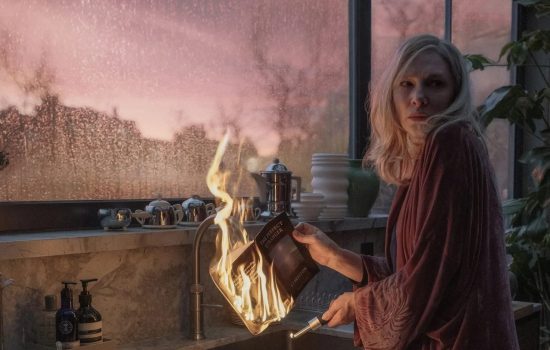
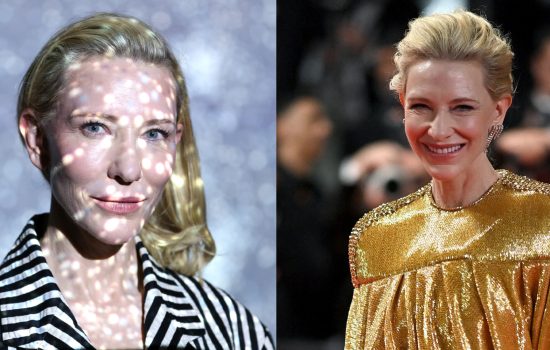

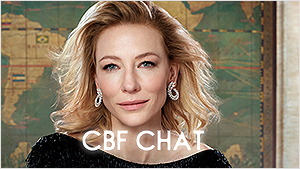
 A Manual for Cleaning Women (202?)
A Manual for Cleaning Women (202?) The Seagull (2025)
The Seagull (2025)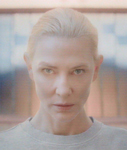 Bozo Over Roses (2025)
Bozo Over Roses (2025) Black Bag (2025)
Black Bag (2025) 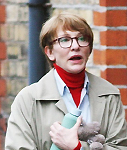 Father Mother Brother Sister (2025)
Father Mother Brother Sister (2025) 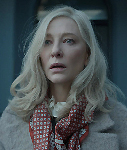 Disclaimer (2024)
Disclaimer (2024) 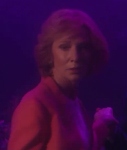 Rumours (2024)
Rumours (2024) 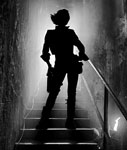 Borderlands (2024)
Borderlands (2024)  The New Boy (2023)
The New Boy (2023) 











